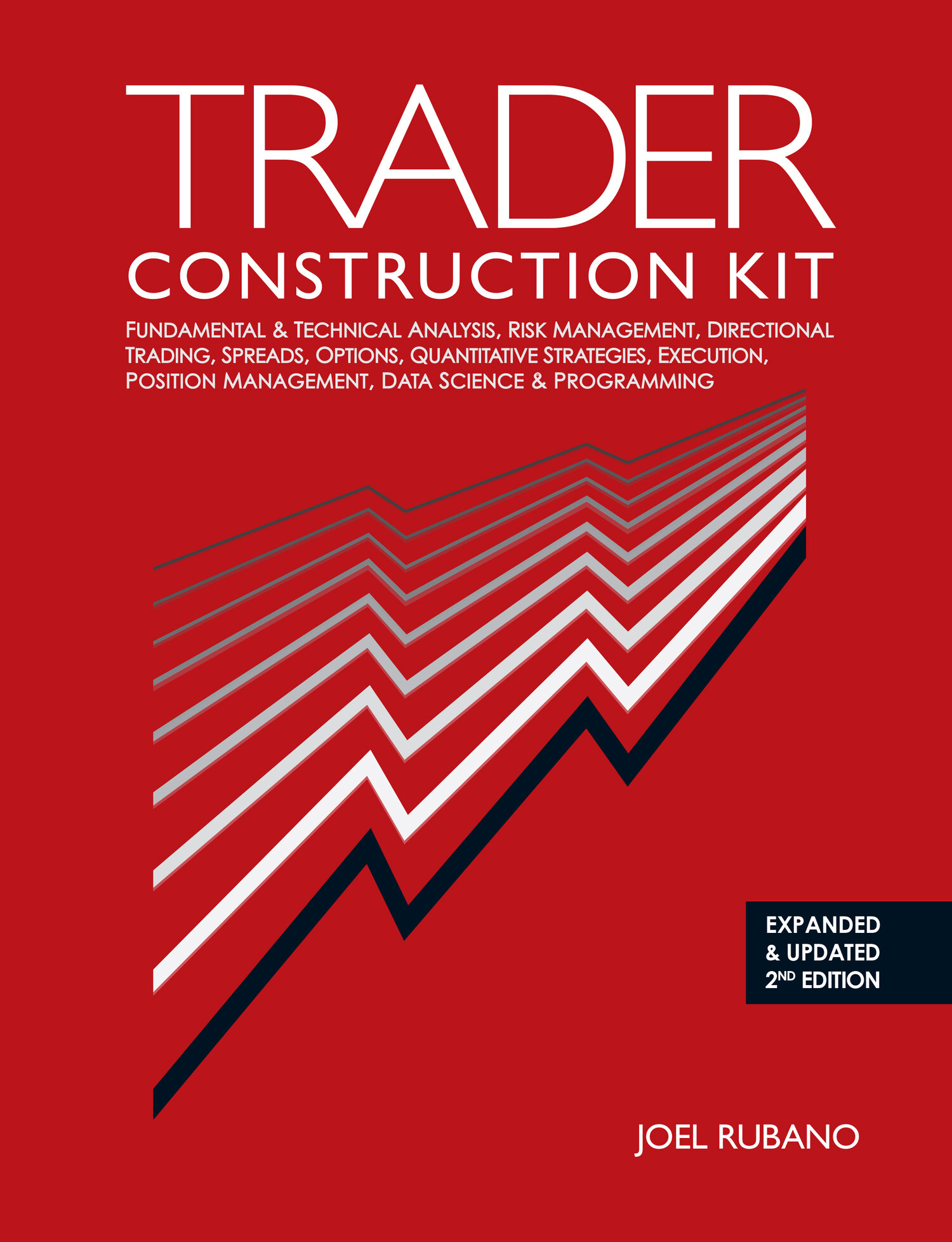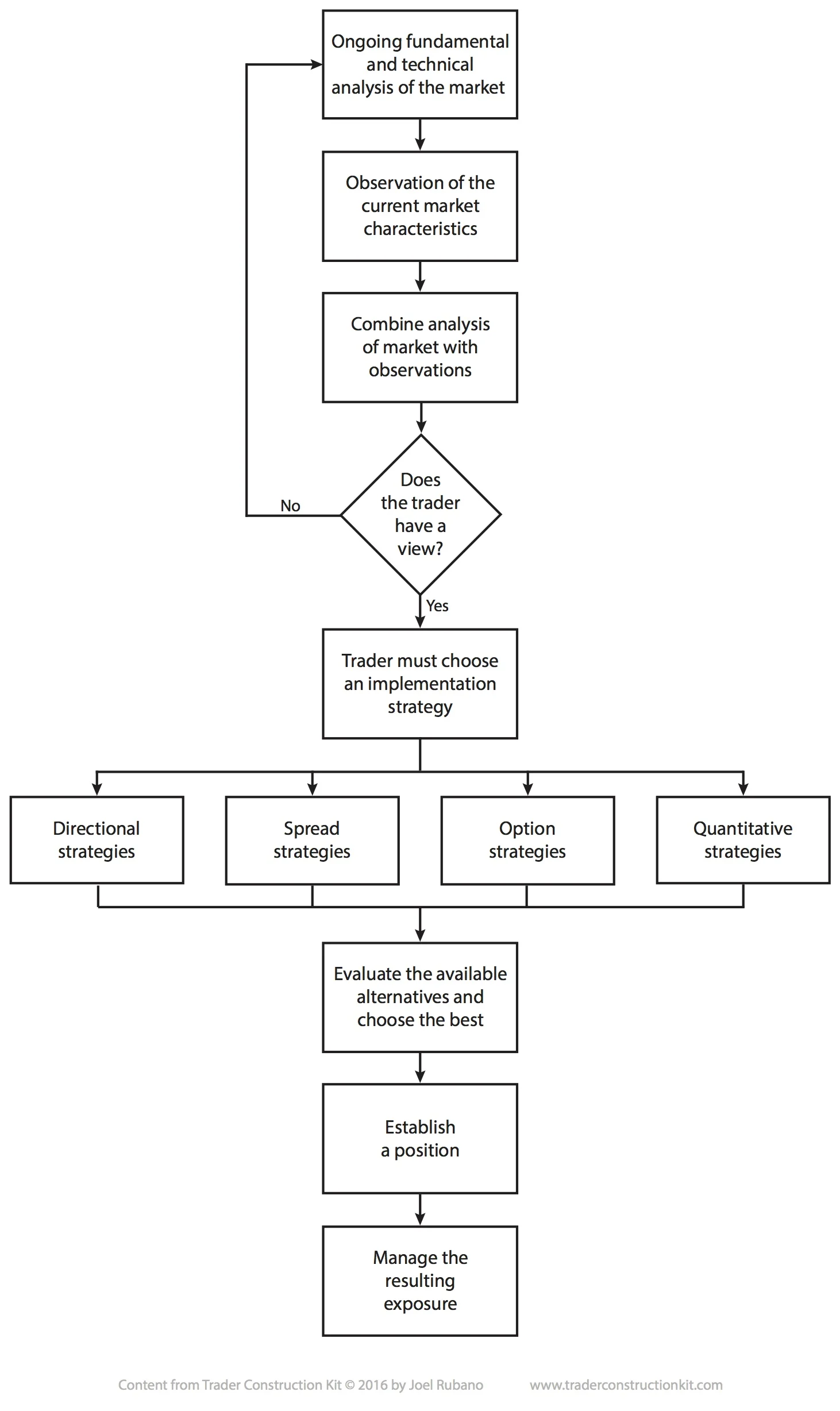One of the features that differentiates Trader Construction Kit is the use of a single, highly detailed case study that incrementally incorporates and applies the lessons learned in each chapter (described in outline form here), as seen in this excerpt from the book:
"My goal is to explain the common strategic building blocks that are applicable to all markets. In the interests of being useful to the maximum number of readers I have attempted to present the material in a product-neutral fashion. This would be challenging (if not impossible) if I were to draw the preponderance of the examples from my personal experiences in the energy market. Conversely, using a broad range of examples from currencies, equities, and fixed income would ensure that I was frequently pontificating on subjects of which I had no practical knowledge.
I have attempted to resolve this dilemma by creating a highly detailed case study describing the market for a fictional commodity called Product X, complete with underlying market fundamentals, historical prices, and a global balance of trade. The Product X case runs through the entire book, and will be incrementally examined and interpreted with the tools developed in each successive chapter. The reader will get to see, start to finish, how to analyze a market, develop actionable information, evaluate trading strategies, and select the optimal means of implementation.
Working through the process as a trader would when approaching a new market will provide a depth of understanding of the material impossible to achieve with dozens of individual stand-alone examples."
The initial set of Product X market data is evaluated via the same analytical process that would be applied to real-world financial products:
Figure 0.1 Flowchart of an idealized trading process.
The Product X case study is truly immersive, as seen in the following snapshots from Trader Construction Kit:
Global fundamental supply/demand considerations and projected future trade balances impact both the general level of Product X prices and the fluctuations in the spreads between country-specific markets:
Figure 3.8 Historical and projected Product X production by country.
Figure 3.10 Current Product X imports and exports by country.
The second part of the process of developing a view involves conducting a detailed technical analysis of the Product X futures markets, part of which can be seen here:
Figure 7.10 FEB ProdX chart with moving average, Bollinger Band, and short- and long-term Fibonacci retracement studies.
Once the trader has a perspective on the future of prices, they evaluate a variety of directional, spread, option, and quantitative trading strategies and select the most efficient means of expressing their view of the market. Here we see one possible implementation of a time spread using Product X futures contracts:
Figure 9.20 The DEC/JAN+1 ProdX time spread as a relative-value play.
To create the Product X case study, I began by generating a set of simulated price data, wrote the description of the participants in the market, then created an initial set of supply/demand conditions. From that starting data set, I analyzed the market as I would for any other product. By not starting with the "answers" and working backward from there, I ended up with a much more interesting, realistic process. Not every trading strategy I would have wanted to do was possible, given the constraints, and I had to search for creative ways to implement my view. Just like a real market.
To read more, click here. To purchase Trader Construction Kit, click here. To see future updates, follow @TCK_JRubano on Twitter.
All material from Trader Construction Kit Copyright © 2016 Joel Rubano. All rights reserved. No part may be reproduced in any form or by any electronic or mechanical means, including information storage and retrieval systems, without permission in writing from the publisher, except by reviewers, who may quote brief passages in a review.





